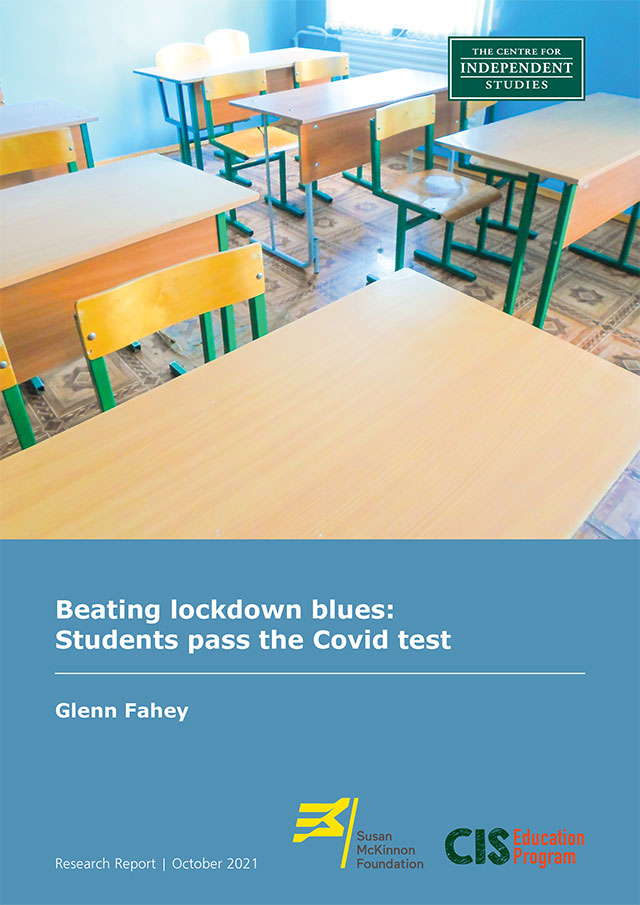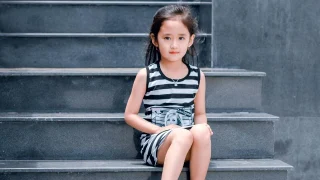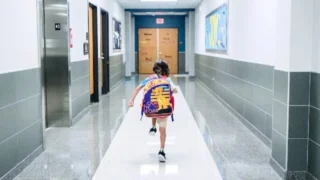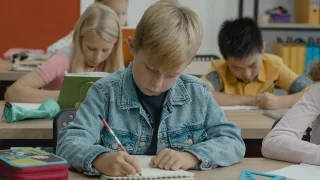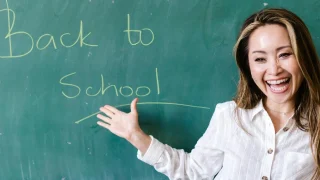
Students have suffered educational disruption in combatting the spread of covid-19, particularly in dealing with remote learning. Education policy and practice during the pandemic has faced uncertainty, with some a priori assumptions proven true, while others not.
The research tests the following a priori assumptions of home-based remote learning against the evidence that is now available:
- Disadvantaged students will suffer educationally from a digital divide.
- Students will suffer from a significant learning loss.
- Disadvantaged students will be disproportionately impacted in learning outcomes.
- The mental health impact on students will negatively affect their educational outcomes.
- Significant additional resourcing is required to address learning losses, especially those of disadvantaged students.
The research finds that:
- There’s little evidence that disadvantaged students were disproportionately impacted accessing home-based remote learning supports.
- There’s mixed evidence of the scale and scope of learning loss.
- There’s no clear relationship between students’ demographics and their reported achievement during home-based learning.
- No significant relationship between students’ reported achievement and their mental and social health, but that their coping levels matter.
- Rather than significant additional resourcing, better investment of existing funding to improve teaching practice would be most effective.
Policymakers and educators must make evidence-based decisions in advancing education policy and practice coming out of the pandemic.
School-based tutoring, ATAR concessions not needed to counter remote learning
The analysis in Beating the lockdown blues: Students pass the Covid test estimates that from 6% to 14% of students are likely to have progressed more slowly during home-based remote learning, but school-based tutoring is not the answer. Research author, Glenn Fahey, says that to address lost learning, small group ‘catch-up’ tutoring alone may be a misdirected and missed opportunity for policymakers and educators.
“Across 2021 and 2022, $1.2 billion has been committed to small group tutoring programmes in NSW and Victoria. What’s less costly, but more impactful, is for every classroom to benefit from evidence-based teaching,” Fahey says. “It’s access to quality instruction, not just a tutor, that will lift student outcomes. The best investment policymakers can make is lifting the quality of teaching for all students, not standalone and temporary programmes.”
The research also casts doubt on the justification for additional provisions and support being offered for HSC and VCE students, such as adjustments to ATARs. Despite fears of a spike in students’ stress levels, the research finds no relationship between students’ stress and their achievement.
Fahey says the debate about HSC and VCE has been dominated by adults’ hysteria about students’ stress levels, not evidence on how students actually feel. He warns that excessive and unnecessary accommodations don’t help students doing their HSC and VCE. If anything, he says, this can backfire, by leading students to feel they don’t need to put their best foot forward.
Overall, the research paints a cautiously optimistic picture on the educational impact of the pandemic. That comes off the back of 2021 preliminary NAPLAN results, which suggests that students, on average, are on track with pre-pandemic achievement levels.
The report estimates that if Australian students had progressed as slowly as their peers in other countries, then the average Australian student would be the equivalent of 6.6 weeks behind in reading and numeracy — and as much as 19.4 weeks behind in Victoria.
The analysis finds that whether students performed well or poorly during home-based remote learning is not well predicted by students’ past achievement or their demographics. Students with higher levels of classroom engagement, greater ability to concentrate on studies, higher motivation to study, and greater coping ability during the pandemic were more likely to report high achievement while learning from home.
The report calls for policymakers and educators to make evidence-based decisions in responding to the pandemic, rather than misconceptions.
ALSO READ: Mind the Gap: Understanding the Indigenous education gap and how to close it
SELECTED REFERENCES
OECD (2021). The State of School Education: One Year into the COVID Pandemic, OECD Publishing, Paris, https://doi.org/10.1787/201dde84-en.
Joseph, B. and Fahey, G. (2020). Pain without gain: Why school closures are bad policy, Policy Paper No 28, Centre for Independent Studies: Sydney.
https://www.nsw.gov.au/media-releases
OECD (2021). The state of school education: One year into the pandemic, Preliminary results — March 2021, OECD Publishing, Paris, https://doi.org/10.1787/201dde84-en.
UNESCO. (2021). Total duration of school closures. https://en.unesco.org/covid19/educationresponse
OECD (2020), A framework to guide an education response to the COVID-19 Pandemic of 2020, OECD Policy Responses to Coronavirus (COVID-19), OECD Publishing, Paris, https://doi.org/10.1787/6ae21003-en
UNICEF (2020). How many children and young people have internet access at home? Estimating digital connectivity during the COVID-19 pandemic, UNICEF, New York.
Thomson, S. (2020 April 20). What PISA tells us about our preparedness for remote learning. https://www.teachermagazine.com/au_en/articles/what-pisa-tells-us-about-our-preparedness-for-remote-learning
